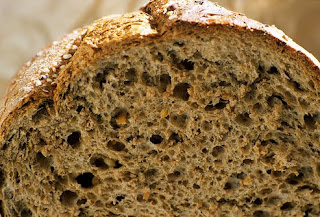I’ve had some recent questions about adding fresh lemon to drinking water. Some think it’s very powerful for health, while others have heard rumors that it’s not good for endurance athletes.
So what’s the truth?
Lemons can be very cleansing to our internal environment. They are rich in vitamin C, potassium and magnesium. These are three very powerful nutrients that can help maintain optimal health inside of us. Some of the benefits of adding lemon to our water are listed below:
• Lemons are antiseptic and can prevent growth of bad bacteria in our digestive system
• Lemon juice helps alkalize the body (remember, cancer and other disease can only thrive in an acidic environment, so the more alkalizing foods we can incorporate into our diet, the better)
• The potassium nourishes brain and nerve cells
• When a pregnant woman drinks lemon water, she is helping the bone health of her child
• Gargling lemon water can soothe a sore throat
• Lemon aids in digestion by stimulating digestive juices, and helps reduce bloating and gas
• Lemon water contains powerful antioxidants, which help flush toxins from the body and cleanse our liver and kidneys
• It can ease constipation

I recommend avoiding the prepackaged lemon juice (you know, the fake plastic lemons). This is not fresh and could have preservatives or other chemicals added to it. Organic lemons are best, and make sure to scrub the outside of the lemon prior to dropping it into your glass. Some swear by the practice of drinking a glass of warm water mixed with the juice of ½ lemon each morning. It cleanses your body and jumpstarts your digestive system for the day. Other ways to enjoy lemon include squeezing lemon into your tea, adding lemon juice to your salad dressings and squeezing lemon juice over foods such as chicken, brown rice and black beans.
We squeeze fresh lemons into our Aquasana drinking water so whenever we fill up from the fridge, we are getting a little boost with the added lemon. And when Ed and I felt a cold coming on a couple weeks ago, we were pushing the warm lemon water morning and night, which seemed to help. I love the taste of lemons, so I find it easy to incorporate them into my diet.
As for the rumor that drinking water with lemon can be bad for endurance athletes…
I could not find much information supporting this statement. I did find out that lemon contains magnesium, and magnesium is known to decrease cortisol levels after aerobic exercise. Cortisol, also known as the “stress hormone”, helps restore balance after any type of stress. So I suppose if the magnesium from the lemon blocks cortisol release, an endurance athlete who drinks water with lemon could take longer to restore their body after a race or long workout. However, this is just my own derivation and I really did not find much information claiming this to be true. With all the powerful things lemon water can do for us, I think an endurance athlete would actually benefit from adding a little lemon juice to their water every once in a while.

Have a great weekend! I am off to a nutrition conference in St. Paul, MN (my hometown!), so I am hoping to return next week with some great new information to share with all of you.


















